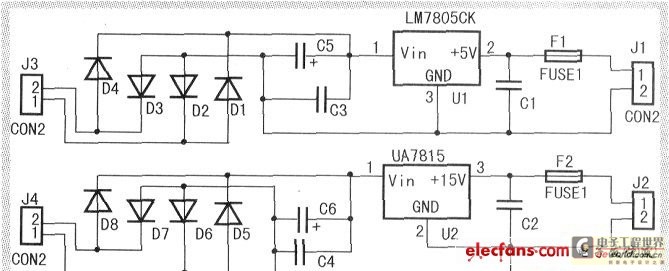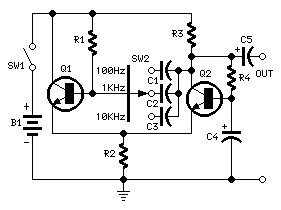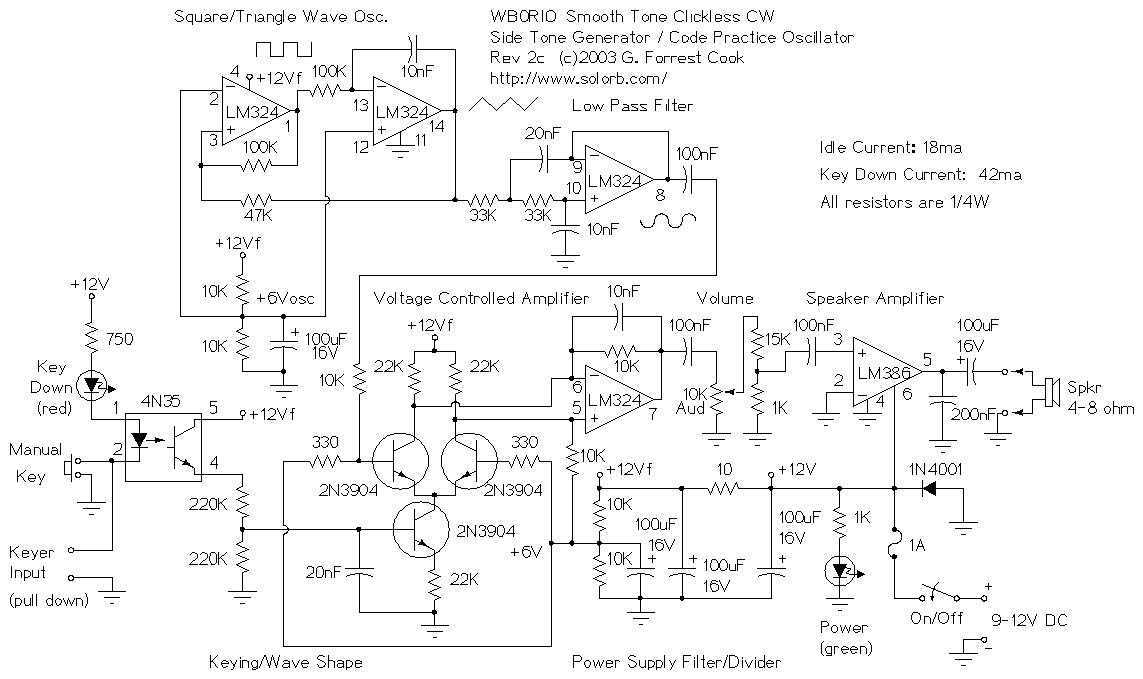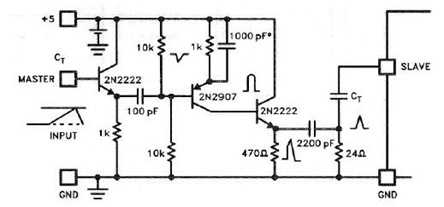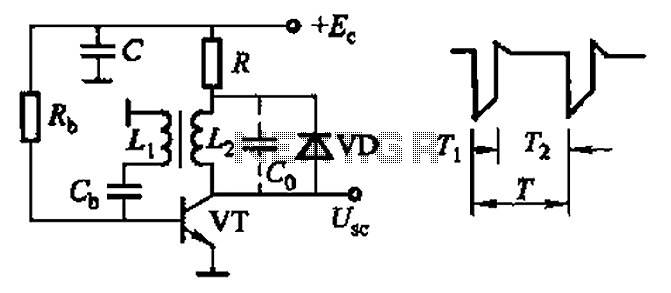
Sawtooth Wave Generator
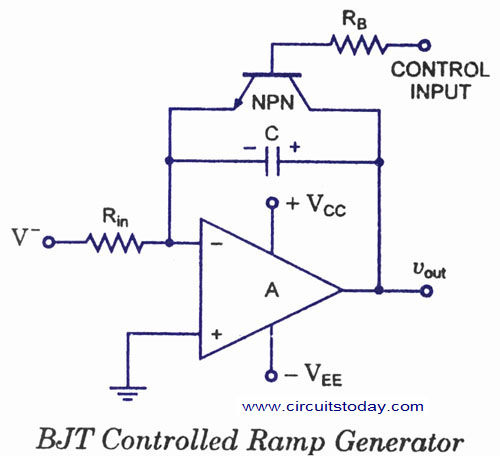
A sawtooth wave generator utilizing the NE555 timer and the uA741 operational amplifier. The NE555 is configured as a square wave generator, while the uA741 is set up as an integrator. The circuit diagram and working theory are included.
The sawtooth wave generator circuit consists of two main components: the NE555 timer and the uA741 operational amplifier. The NE555 timer is configured in astable mode to generate a square wave output. The frequency of this square wave can be adjusted by varying the resistors and capacitor connected to the timer. The output of the NE555 timer switches between high and low states, producing a square wave that oscillates between the supply voltage levels.
This square wave output is then fed into the uA741 operational amplifier, which is configured as an integrator. The integrator takes the square wave input and produces a sawtooth waveform as its output. The integration process involves charging and discharging a capacitor in response to the square wave, resulting in a linear ramp-up of voltage followed by a sudden drop, which characterizes the sawtooth waveform.
The circuit typically includes a resistor and capacitor connected to the inverting input of the uA741. The feedback loop is critical for maintaining the integration process and ensuring that the output waveform has the desired characteristics. The output frequency and amplitude of the sawtooth wave can be adjusted by modifying the values of the components in both the NE555 and uA741 sections.
In practice, this sawtooth wave generator can be used in various applications, including signal processing, waveform generation for audio applications, and as a timing source in other electronic circuits. The combination of the NE555 timer and uA741 operational amplifier provides a reliable and straightforward method for generating sawtooth waveforms in a compact circuit design.Sawtooth wave generator using NE555 and opamp uA741. NE555 is wired as square wave generator and opamp is wired as integrator.Circuit diagra, and working theory.. 🔗 External reference
The sawtooth wave generator circuit consists of two main components: the NE555 timer and the uA741 operational amplifier. The NE555 timer is configured in astable mode to generate a square wave output. The frequency of this square wave can be adjusted by varying the resistors and capacitor connected to the timer. The output of the NE555 timer switches between high and low states, producing a square wave that oscillates between the supply voltage levels.
This square wave output is then fed into the uA741 operational amplifier, which is configured as an integrator. The integrator takes the square wave input and produces a sawtooth waveform as its output. The integration process involves charging and discharging a capacitor in response to the square wave, resulting in a linear ramp-up of voltage followed by a sudden drop, which characterizes the sawtooth waveform.
The circuit typically includes a resistor and capacitor connected to the inverting input of the uA741. The feedback loop is critical for maintaining the integration process and ensuring that the output waveform has the desired characteristics. The output frequency and amplitude of the sawtooth wave can be adjusted by modifying the values of the components in both the NE555 and uA741 sections.
In practice, this sawtooth wave generator can be used in various applications, including signal processing, waveform generation for audio applications, and as a timing source in other electronic circuits. The combination of the NE555 timer and uA741 operational amplifier provides a reliable and straightforward method for generating sawtooth waveforms in a compact circuit design.Sawtooth wave generator using NE555 and opamp uA741. NE555 is wired as square wave generator and opamp is wired as integrator.Circuit diagra, and working theory.. 🔗 External reference

